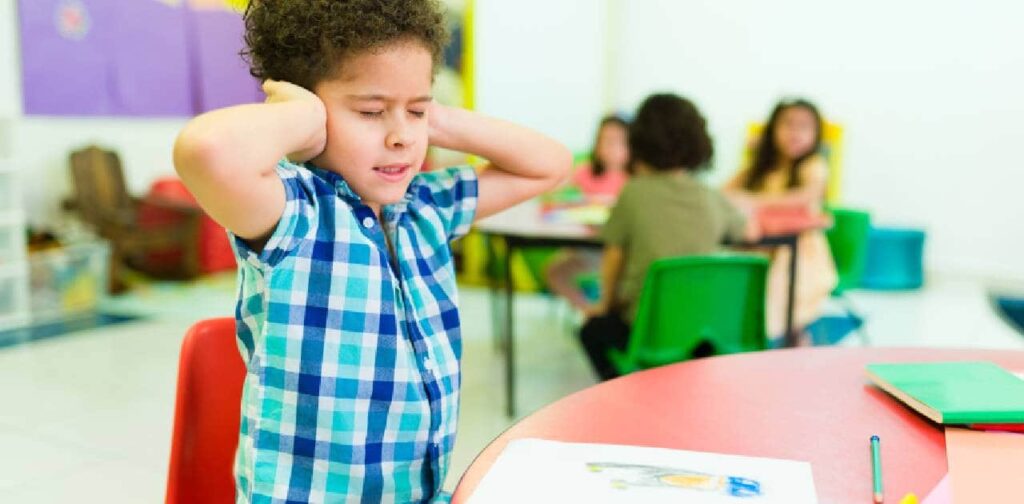Neurodivergent and neurodiversity are terms becoming more commonly used in education and wider society, and here we discuss how this can help learners.
The term neurodiversity itself refers to the natural variations in how people’s brains work and process information differently, encompassing conditions like autism spectrum disorder, ADHD, and dyslexia.
As a teacher, finding the best and most appropriate methods to support neurodiverse students can be tricky to say the least, and adds another layer of complexity to an already challenging role.
Current Challenges for Neurodiverse Students in Schools
Although neurodivergent individuals make up a significant portion of the UK population, estimated at around 15%, there is still a widespread lack of understanding and misinterpretation regarding their unique thought processes and the complexities of their conditions.
As more and more students receive diagnoses of neurological differences, it becomes increasingly important to ensure they receive the support they need to thrive.
Educators play a crucial role in fostering an inclusive, understanding, and appreciative environment for neurodivergent students, helping them feel confident in their abilities to succeed both academically and in life. By recognising and embracing that students process information in diverse ways, a better understanding of the neurodivergent experience can be cultivated.

Neurodiverse students, such as those on the autism spectrum or with ADHD, often encounter unique challenges in the classroom setting, such as:
Sensory experiences like bright lights and loud noises can feel overpowering.
Social situations, like group work and class discussions, demand skills that can be difficult.
Executive function differences, including planning, organisation, and focusing attention, can impact academic performance.
Rigid teaching methods may not accommodate diverse learning needs and styles. Greater awareness, accommodations, and inclusive practices are crucial to support these students’ varied strengths and create affirming educational environments where they can flourish.
Neurodiverse students' social cues
In a classroom environment neurodiverse students, particularly autistic students or those with ADHD, may exhibit certain signs or signals when experiencing an episode, meltdown, or significant distress.
Here are some potential indicators, such as body language and behaviours to help teachers and educators identify when neurodiverse students need help and support:
For students who have autism spectrum disorder or are on the autism spectrum:
- Stimming behaviours (hand flapping, rocking, etc.) intensifying
- Withdrawing or trying to leave the environment
- Covering ears or eyes due to sensory overload
- Increase in repetitive behaviours or scripts
- Expressing frustration through crying, hitting, or yelling
For students with ADHD:
- Increased fidgeting, squirming, or restlessness
- Struggling to remain seated or follow instructions
- Excessive impulsivity like blurting out or interrupting
- Extreme emotional outbursts or “rage” episodes
- Appearing spaced out, unfocused, or “zoning out”
General signs across neurodiverse students:
- Self-injurious behaviours like head banging or hair-pulling
- Shutting down and being non-responsive
- Trying to escape the situation or environment
- Aggressive behaviours towards others or property
- Intense anxiety, distress, or “fight or flight” response
(These are generalisations and may not be constantly obvious or not even present at all.)

Educators and teachers, in particular, need to learn each student’s specific social cues and triggers for their neurodiverse students and cultivate a psychologically safe classroom.
It is vital to communicate with the student’s parents and have plans/strategies in place to support neurodiverse conditions.
Tailored lesson plans and understanding the needs of their student’s neurodivergent conditions can help prevent distress and escalation by providing appropriate support during these episodes.
At Connex Education, we’ve identified 5 key strategies teachers can implement to effectively support neurodiversity in the classroom…
5 ways educators can support neurodiverse students in the classroom
1. Create a sensory-friendly environment.
Many neurodiverse students are hypersensitive to sensory input and can feel overwhelmed easily, particularly those with ADHD (Attention Deficit Hyperactivity Disorder). By minimising distractions in the classroom, teachers can support neurodiverse learners immensely.
Creating a psychologically safe classroom can be done in several ways, such as using natural lighting, reducing clutter, and providing noise-cancelling headphones or earplugs when needed for when neurodivergent students are feeling overwhelmed.
Designate a quiet space where overstimulated students can take a break.
2. Use visual supports.
Neurodivergent learners may often grasp concepts better through visuals like pictures, diagrams, and colour-coding.
Visual aids reinforce the direct teaching by mapping out processes visually.
This multi-sensory approach, pairing engaging visuals with structured language, allows neurodivergent students to effectively comprehend, retain, and apply the content.
3. Offer flexibility with seating and movement.
Many neurodivergent students struggle to remain still and focused for long periods in traditional classroom setups. The need for sensory input and mobility is essential for regulating their bodies and minds.
Rigid expectations of sitting stationary can be incredibly challenging and counterproductive. Flexibility with seating and movement acknowledges this diversity of needs within an inclusive learning environment.
Teachers can support these students by allowing fidget toys, doodling, or finger tracing to channel restless energy.
Providing alternative seating like standing desks, exercise balls, or beanbags enables gentle movement. Designating areas for pacing or movement breaks builds in much-needed opportunities to reset.
Embracing flexibility with seating and mobility empowers neurodivergent learners to stay engaged and focused by meeting their sensory needs in the classroom.

4. Embrace different learning methods and styles.
Neurodivergent individuals may process and learn information through diverse pathways. A one-size-fits-all approach leaves many struggling to understand and engage.
Educators must recognise this neurodiversity by varying their instructional methods to tap into different learning styles and preferences, such as:
- Visual learners benefit from diagrams, videos and pictures.
- Hands-on activities cater to kinaesthetic learners.
- Auditory processing is supported through storytelling and discussions.
- Interactive technology engages digital learners.
By providing multisensory options combining visual, auditory, tactile and exploratory elements, teachers can meet a wide range of learning needs. Some gravitate towards explicit, systematic instruction while others thrive with creative, open-ended learning.
Varying the methods used to present material creates an inclusive classroom where neurodivergent students can tap into their innate strengths and preferred pathways for absorbing information. This instructional flexibility affirms diverse learners and empowers them to succeed.
5. Foster strengths and interests.
Neurodivergent students may struggle in certain areas, but they also possess unique strengths, talents and interests, particularly in creative subjects. Teachers need to identify and nurture these assets to help students learn and hone their talents. Neurodivergent students tend to excel in art, literature, music and other creative subjects.
Others have talents in coding, problem-solving or seeing unique connections. Recognising and celebrating these gifts builds self-confidence and belonging for neurodiverse students.
Teachers supporting neurodiversity need to tailor their teaching strategies as well as exam preparation and assignments to their showcase their abilities foster engagement of neurodiverse students. A space enthusiast could write a sci-fi comic.
By designing learning experiences around interests, students feel valued for their brilliance rather than defined by struggles. This strengths-based, personalised approach reinforces a growth mindset while maximizing motivation. The key as educators is highlighting each neurodivergent student’s special talents as they problem-solve and navigate their way through their school journey.

Meeting the needs of different types of neurodiversity
Neurodiversity encompasses a wide range of neurological differences in how individuals think, learn and process information. As educators, we know no two students are the same – each has unique abilities and needs.
When supporting neurodivergent pupils like those with autism, ADHD or dyslexia, a one-size-fits-all approach falls short.
To create an inclusive classroom, we must recognise and accommodate the diverse needs of different neurological conditions. Tailoring teaching strategies and making reasonable adjustments allows us to empower every neurodivergent student to learn in a style suited to their neurocognitive profile.
The Importance Of Supporting Neurodivergent Students In The Classroom
For those teachers who have neurodivergent individuals in their classroom, you can support them and their learning by building positive relationships with the students and actively encouraging parental engagement in school.
Additionally, making reasonable adjustments to your classroom environment and teaching strategies is crucial. All students learn differently, and some will need extra support in the classroom. Your role as an educator is to embrace different learning styles and encourage human diversity.
Neurodivergence is not a deficit but a different way of experiencing and interacting with the world. By cultivating an inclusive classroom that celebrates neurodiversity, you empower these students to feel valued, understood and equipped to reach their full potential. An affirming, accommodating educational environment allows the remarkable talents of neurodivergent individuals to truly shine.
More from Connex Education
As we strive to meet the diverse needs of neurodivergent learners, quality training is essential for educators. Connex Academy, the sister brand of Connex Education, offers an insightful course titled “Awareness of Understanding Autism” designed to deepen teachers’ knowledge in this area.
By enrolling on this course, professionals can gain valuable strategies for creating an autism-friendly classroom environment, understanding the unique strengths and challenges autistic students face, and learning how to effectively support their social, academic and sensory needs.
With increased awareness and practical tools from expert-led training like this, educators are better equipped to foster an inclusive setting where neurodivergent students on the autism spectrum can truly thrive.
Why not check out our latest teaching and education roles, we recruit for a variety of role on both permanent and short term contracts, click here to find out more





